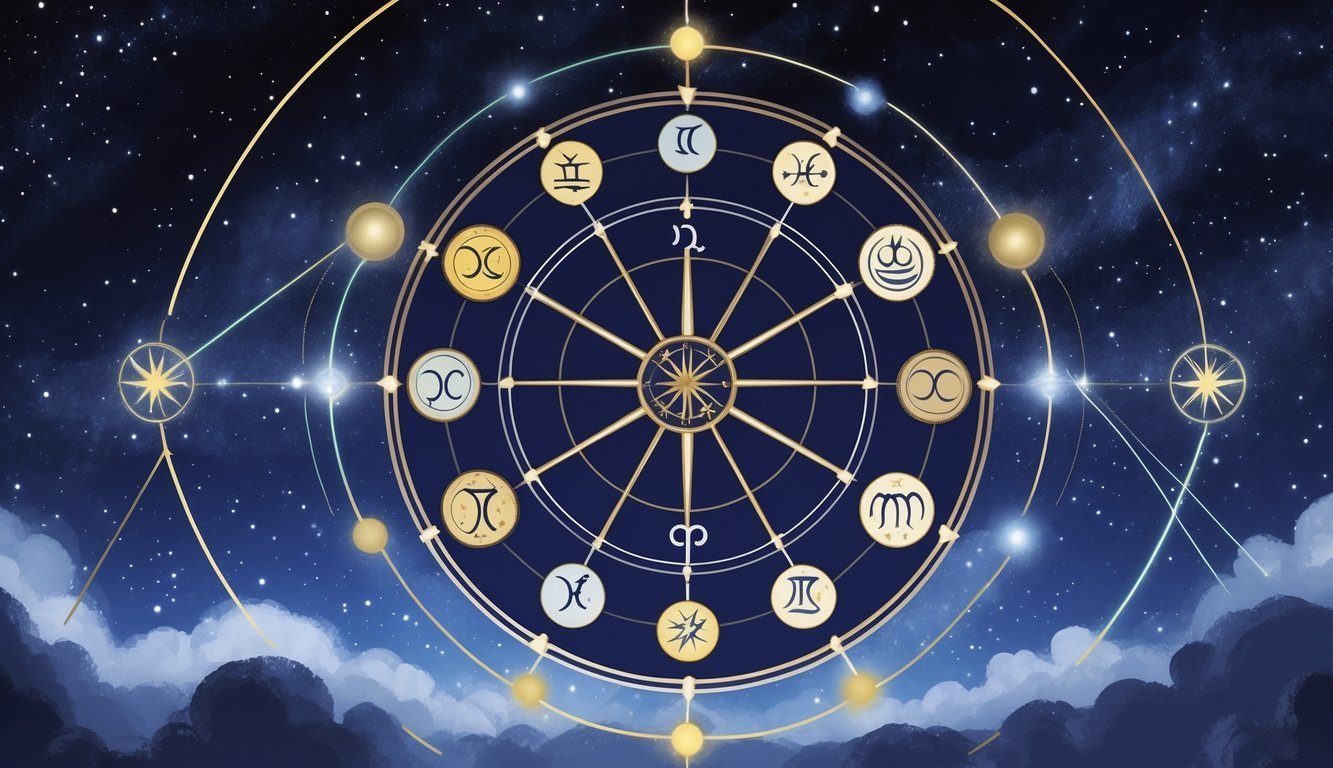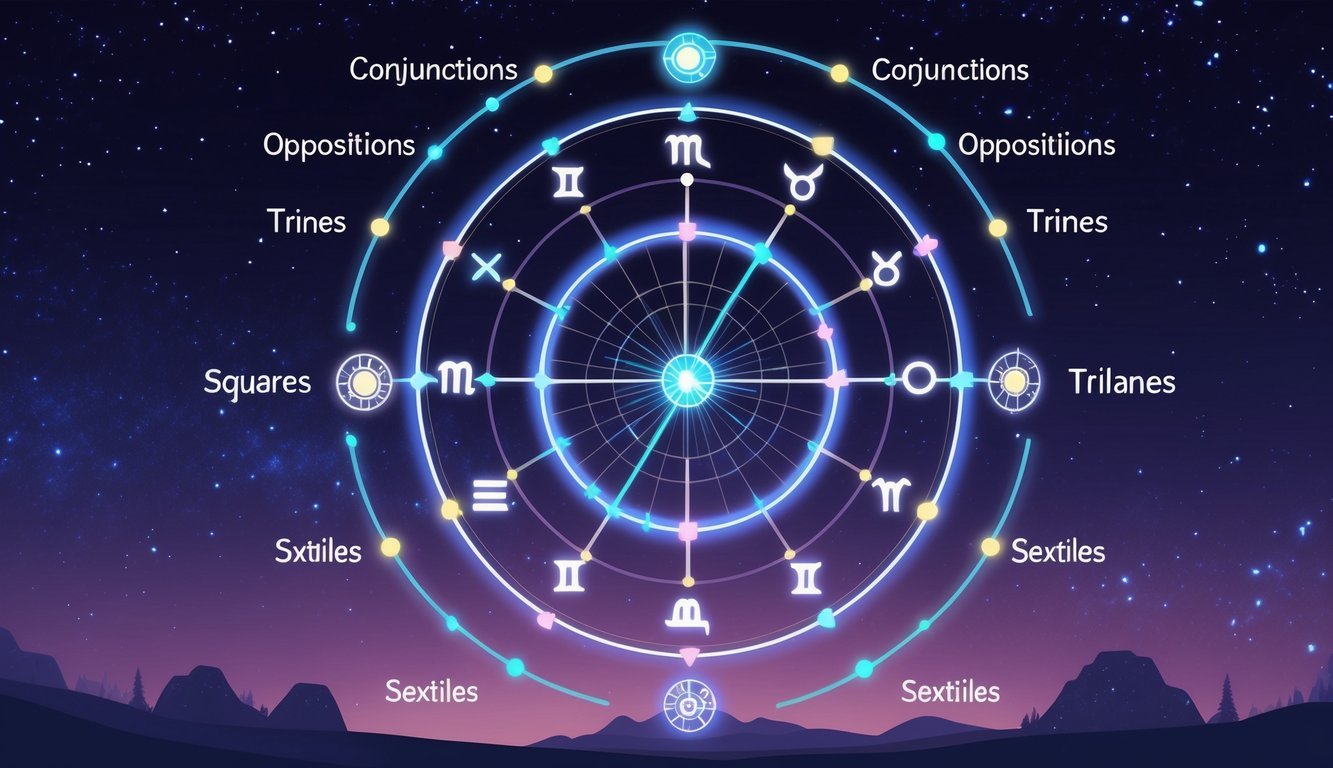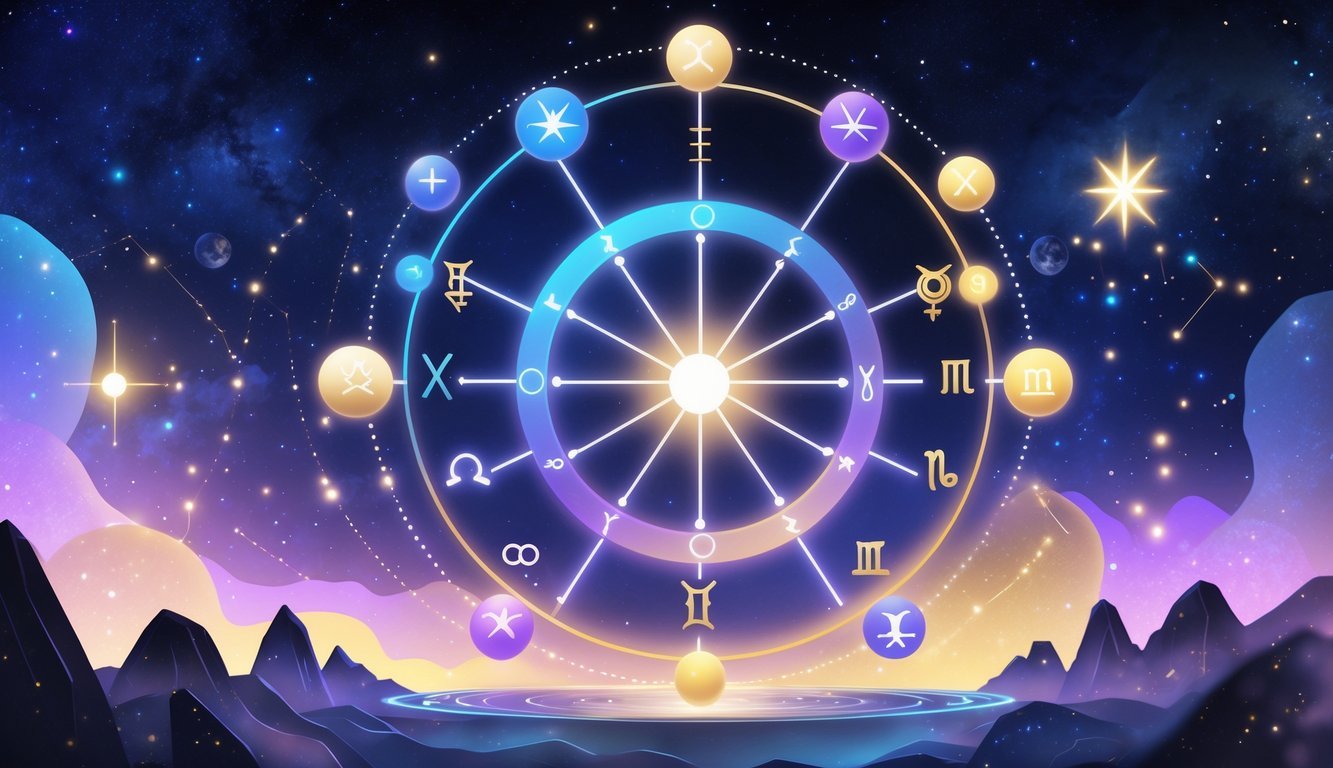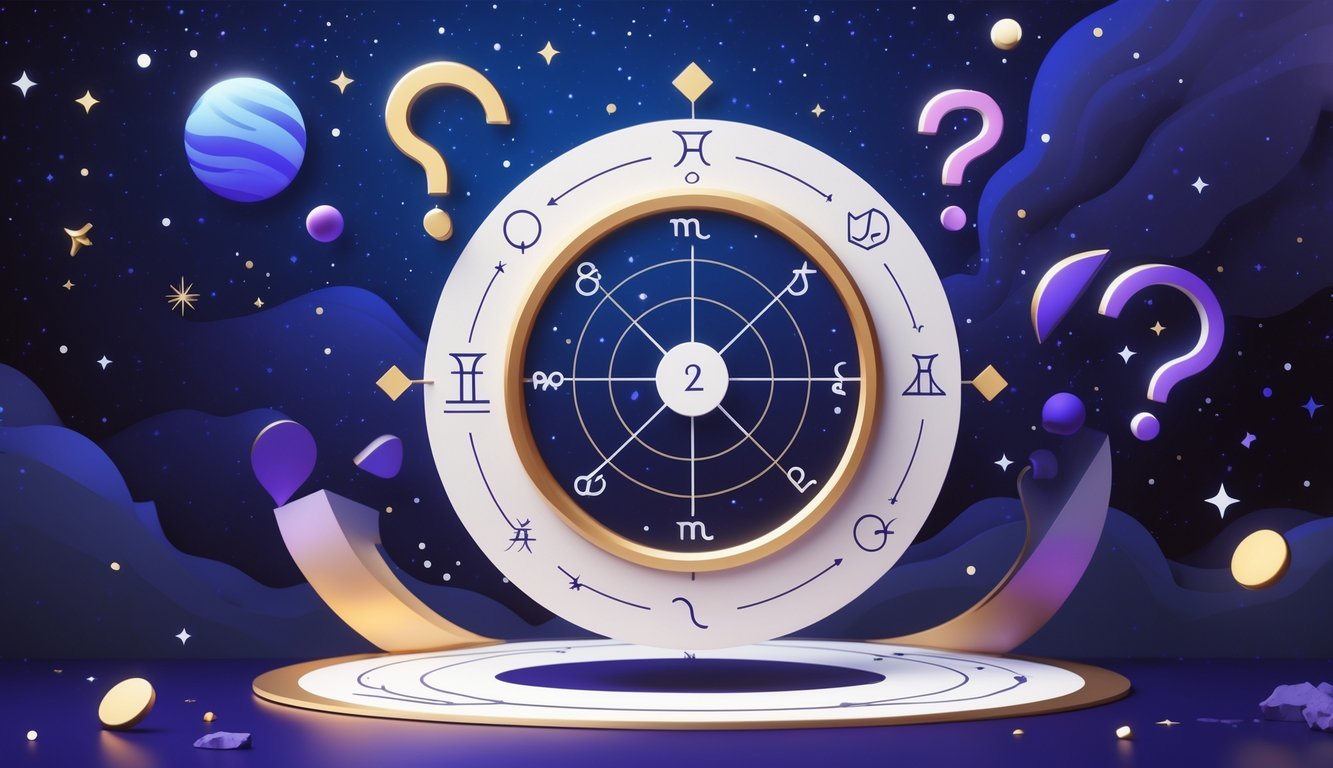PsychNewsDaily Publishers
100 Summit Drive
Burlington, MA, 01803
Telephone: (320) 349-2484
PsychNewsDaily Publishers
100 Summit Drive
Burlington, MA, 01803
Telephone: (320) 349-2484
Astrology aspects are angles between planets in a birth chart, influencing personality and life events through harmonious or challenging interactions. Major aspects include conjunctions, sextiles, squares, trines, and oppositions.

Astrology aspects are the angles that planets make to each other in your birth chart. These angles show how different energies connect and interact, shaping your personality and the way events unfold in your life.
When you start to understand these connections, you can see how different parts of your chart either work together or challenge each other.
Each aspect type brings its own flavor. Some create harmony and let energies blend easily, while others stir up tension, sparking change or even conflict.
Learning about these angles gives you a better sense of how your cosmic influences balance or clash. It’s honestly kind of fascinating once you dig in.
When you grasp what astrology aspects mean, you start to see the forces shaping your life story. Suddenly, your chart makes a lot more sense, and you might even notice patterns in your life you’d missed before.

Astrology aspects are simply the angles between planets or points in your birth chart. These angles set up relationships that shape how planetary energies mix and affect who you are.
When you learn about these angles, your astrology chart starts to come alive. Suddenly, things click into place.
In astrology, aspects are specific angles between two or more planets or points, like the Ascendant or Midheaven. We measure these in degrees on the zodiac wheel.
These angles show how the planets’ energies interact. You’ll probably hear about orbs, which are just the allowed wiggle room in degrees for an aspect to count.
For example, a square aspect is 90 degrees, but if it’s 88 or 92 degrees, it still counts because of the orb. It’s not always exact.
Angles reveal whether planets support or challenge each other. When you understand them, you start spotting strengths and tensions in your natal chart.
Astrology has five main aspects, and each one has a clear meaning:
| Aspect | Angle (Degrees) | Symbol | Meaning |
|---|---|---|---|
| Conjunction | 0° | ☌ | Strong blend, planets work together. |
| Sextile | 60° | ✶ | Easy flow, opportunities. |
| Square | 90° | □ | Tension, challenges to overcome. |
| Trine | 120° | △ | Harmony, natural talents. |
| Opposition | 180° | ☍ | Balance or conflict, needing compromise. |
Each aspect brings its own energy. A trine means things just flow and you have natural gifts, while a square can make life feel like an uphill climb.
Minor aspects are the more subtle angles in your chart—things like quincunx (150°), semi-sextile (30°), and so on.
They don’t pack the same punch as the major aspects, but they still matter. These little angles can show hidden strengths or minor tensions you might not notice at first.
Minor aspects help fine-tune the relationships between planets. Sometimes, they explain those small quirks in your behavior or experiences that don’t make sense otherwise.
If you get to know both major and minor aspects, your horoscope just gets richer and more detailed.

Astrology aspects show how planets relate by their angles, shaping the energy in your chart. Some aspects bring harmony and ease, while others create tension or force you to change.
You’ll end up with a mix of positive, challenging, and complicated interactions, depending on the angles.
A conjunction pops up when two planets are very close, usually within 10 degrees. Their energies blend, so they work almost like one force.
Which planets are involved really matters here. For example, if the Sun and Mercury conjoin, your thinking gets a boost.
But if Mars and Saturn team up, you might feel blocked or frustrated. Conjunctions can be intense and really spotlight whatever those planets represent.
They aren’t automatically good or bad—they just turn up the volume on those planetary themes.
Trines show up when planets are about 120 degrees apart, usually in the same element (fire, earth, air, or water). These aspects are famous for being easy and smooth.
If you have a trine, you probably have natural talents or strengths in that area. Like, a fire sign trine with Mars and Jupiter could make you bold and enthusiastic.
Trines are called positive aspects because they bring harmony without much effort. They often make things just… work.
A sextile is a 60-degree angle, usually between planets in compatible elements like earth and water, or air and fire.
Sextiles are also considered beneficial but a bit less powerful than trines. They offer opportunities if you’re willing to act on them.
For instance, Venus sextile Uranus might mean sudden, pleasant changes in relationships. Sextiles encourage you to connect and cooperate, but you have to meet them halfway.
Squares (90 degrees) and oppositions (180 degrees) are called hard aspects because they create tension.
Squares often feel like obstacles. They push you to act or adapt by stirring up stress, either inside or out.
Say you have Mars square Saturn—you might feel stuck or challenged. Oppositions happen between planets in opposite signs, showing a tug-of-war or need for balance.
A Moon-Sun opposition could mean your feelings and wants are at odds. Hard aspects push you to grow, but honestly, they can be a pain.
A quincunx or inconjunct is a 150-degree angle. These planets don’t share much in common—no element or polarity—so the energy feels awkward or off-balance.
You’ll probably need to adjust or compromise somewhere in your life. For example, Venus quincunx Saturn could mean you struggle with self-worth in relationships.
It’s not as obvious as a square or opposition, but it still needs attention.
Minor aspects include things like:
Minor aspects tend to work in the background. They add extra layers, sometimes fueling creativity or bringing up little irritations.
If you learn about minor aspects, you’ll spot subtle forces shaping your experiences.

When you know the main types of aspects and their angles, reading your birth chart gets a lot easier. You can spot each symbol, figure out the angles, and even find the rare or lucky planetary connections.
The major aspects to know are conjunction (0°), sextile (60°), square (90°), trine (120°), and opposition (180°). These show how planets interact and affect each other in your chart.
Conjunction means planets are together, blending their energies. Sextile and trine are harmonious and offer easy flow. Square and opposition suggest challenges or tension that need some work.
Measure the angle between two planets on the zodiac wheel. If the difference matches a major aspect angle (give or take a few degrees, called the orb), you’ve got an aspect.
Definitely. Remember the main angles: 0° (conjunction), 60° (sextile), 90° (square), 120° (trine), and 180° (opposition). Usually, 0°, 60°, and 120° mean harmony, while 90° and 180° mean challenge.
Trines (120°) and sextiles (60°) usually get called lucky or helpful. They bring ease and good vibes between planets, supporting growth and positive experiences.
You’ll find that conjunctions between slow-moving planets, like Saturn and Pluto, don’t happen often. When they do show up, they tend to leave a strong mark because these planets move at a snail’s pace and shape major areas of your life.